Black Forest, Baden-Württemberg
Baden-Württemberg is a popular destination thanks to its university towns (Tübingen, Freiburg, Heidelberg), impressive spread of historic castles and palaces, luxurious spas and cultural scene. Its major natural draw is the sprawling Schwarzwald (Black Forest), which spans about 6,0000 sq km (2,000 sq miles) from the refined spa town of Baden-Baden in the north right down to the border with Switzerland. Dotted with lakes, waterfalls, ravines and moorlands, and threaded with rivers and 18,000 miles of trails, it’s a great place to get lost in, and a paradise for hikers, cyclists, cross-country skiers, kayakers and climbers. There are lots of wonderful towns and villages with cultural offerings throughout the region too, plus wine festivals in autumn and Christmas markets in winter.
What to do
The forest is too vast to cover in one visit; it’s much better to select a smaller area for exploration. For a taste of the traditional, head to the Southern Black Forest natural park, a conservation area within the main forest and Germany’s largest natural park, covering 394,000 hectares, full of traditional houses, farms and villages as well as gorges, ravines and moorlands.
Climb the Feldberg, the area’s highest peak at almost 1,500 metres, for soaring views; hike or bike the dramatic 18-mile Wutach Gorge; or admire the Triberg and Todtnau waterfalls. The Titisee is an especially scenic lake, surrounded by mountains and woods, and has options for lunch, ice-cream and boat rentals (the larger Schluchsee is quieter and less developed). Children will enjoy the ziplines and climbing activities at the Action Forest Kletterwald near Titisee, or a visit to the German Clock Museum, which has more than 8,000 exhibits spanning 160 years.
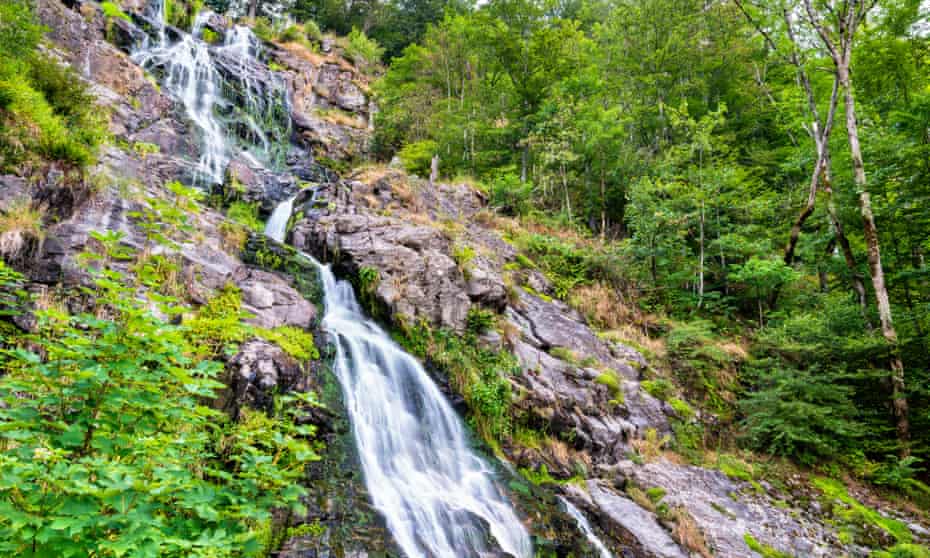
Where to stay
The major bases for the Black Forest are Baden-Baden – former playground for European aristocracy, recent ascendant to Unesco world heritage status, and a hotspot for luxury spas – and the charming university town of Freiburg, which is more convenient for exploring the south. In Baden-Baden, the historic Brenners Park Spa Hotel has one of the most advanced spas in Europe, several restaurants and an emphasis on being expensively pampered (doubles from €455). The Colombi in Freiburg has elegant doubles and smart boutique apartments from €250, as well as a pleasantly rustic restaurant (colombi.de). There are numerous cheaper hotels and bed and breakfasts in smaller towns such as Triberg, Bernau im Schwarzwald, and Sankt Blasien.
Where to eat
The region has its own culinary heritage that includes Kässpätzle, a tasty cheese-covered pasta, Black Forest ham (cured and cold-smoked), white asparagus served with Kratzete (torn pancakes), trout and, of course, Black Forest gateau. In Freiburg, head to Gasthaus zum Kranz for local specialities, or Lichtblick Freiburg for more seasonal, contemporary fare. Breisach, 20 miles west of Freiburg, has several good restaurants, including Cafe Galerie Etoile, set romantically below a Romanesque-Gothic church with panoramic views, and Kaiserstühler Hof, an ivy-clad spot with regionally inspired dishes. Foodies can make the slightly longer trip to Baiersbronn, which is the area with the highest concentration of Michelin stars in the world (eight): Schwarzwaldstube (in the Hotel Tonbach) and Bareiss both have three.
Mittenwald and the Karwendel Alps, Bavaria
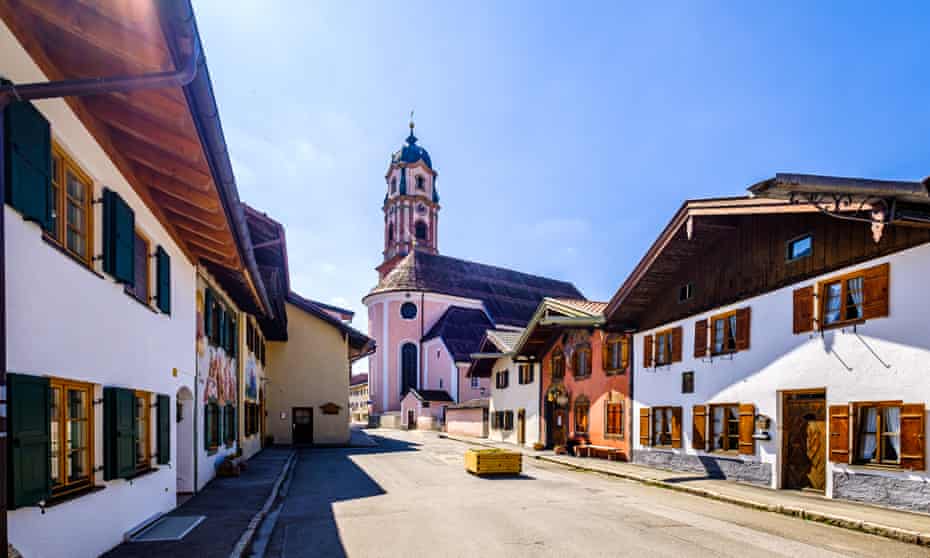
The Bavarian Alps are as well known as the Black Forest, which means world-famous hotspots like Garmisch-Partenkirchen and the Zugspitze can get busy. Much quieter is the small town of Mittenwald, just a few kilometres from the Austrian border and – in the words of Goethe – resembling “a picture book come alive”.
Next to the Karwendel Alpine park, one of the largest nature reserves in the Alps, the town is in an attractive valley and offers plenty of recreational opportunities (including many lakes) and traditional sights such as the Buckelwiesen – rippling meadows known for their biodiversity – and Stadeln, wooden huts used to store hay. In autumn, there’s the Almabtrieb, when goats, sheep, cattle and horses are brought down from the mountains, which culminates in a big party. The town is also famous for music: Matthias Klotz brought the art of violin making to the region in 1685 and helped establish it as the “Village of a Thousand Violins”, and it still has many music-related events throughout the year. Arrive by train if you can – the route from Munich is quite spectacular, taking in the Zugspitze before climbing to the edge of the Karwendel Alps.
What to do
Mittenwald itself has a charming Altstadt (old town) with intricately painted house facades called Lüftlmalerei that relate the town’s history (and the profession of the house owner), the 14th-century church of St Peter and St Paul with a painted tower and baroque interior, and a violin museum. Outside the town, it’s all about biking, hiking and swimming. Mountains are the big draw of course – not just the Karwendel Alps but the Wetterstein range on the other side of the valley, which contains the Zugspitze, the Soiern to the north-east and the Estergebirge to the north-west.
Head up to Bergwelt Karwendel, Germany’s highest nature information centre (there’s a cable car if you don’t fancy the hike), to get an overview and a preview of the local area through telescopes, then choose from over 750km of trails – 85 options in total – spanning everything from leisurely strolls to multi-day hikes. One popular hike is alongside the rock cliff at the Geisterklamm, where a path crosses to the Leutascher valley in Austria. In winter, the trails become cross-country ski routes, and you can also ski (or snowboard) into Austria. Alternatively, take a bike ride along the Isar river to explore villages like Krün and Wallgau. Day trips from Mittenwald include the Schloss Linderhof near Ettal and the Königshaus am Schachen, a surreal chalet with Turkish and Asian-themed rooms built by Ludwig II.
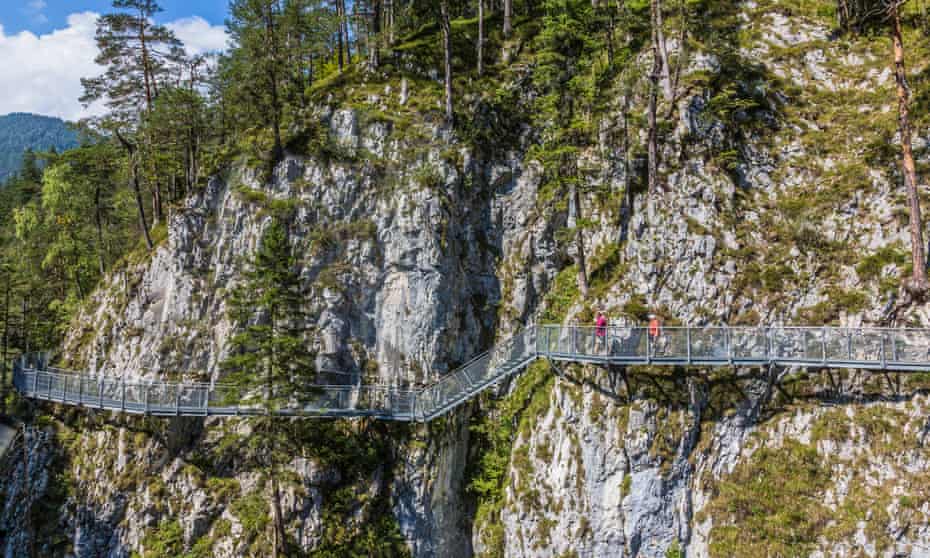
Where to stay
The luxury superstar of the region is spa retreat Schloss Elmau, host to the G7 summit in 2015 and also a cultural centre with regular literary and music events; at €700 a night, though, it’s not cheap. More humble yet still lovely is the Gröbl Alm guesthouse, which has rustic doubles from €170 and a restaurant with home cooking. Das Kranzbach, with its English-style mansion designed by violinist Mary Portman just before the first world war, is a peaceful and tasteful four-star spa with doubles for €250. In Krün, Hotel Alpenglühen, near the Isar, is an easygoing and comfortable spot: simple rooms with balconies cost from just €45 a night.
Where to eat
There are several traditional restaurants in Mittenwald, including the fresco-filled Alpenrose, which is run by a horse lover and also has rooms, and Gasthof Stern, with its classic Bavarian beer garden. More modern is the Michelin-starred Marktrestaurant (which also supplies Mittenwald’s schoolchildren), and Platzfisch, a funky fish-themed spot with sushi and tapas as well as German fish dishes. You can also try the 10 beers at Mittenwalder Brewery, Germany’s highest private brewery , which has been run by the same family since 1860.
Rügen, Mecklenburg-Vorpommern
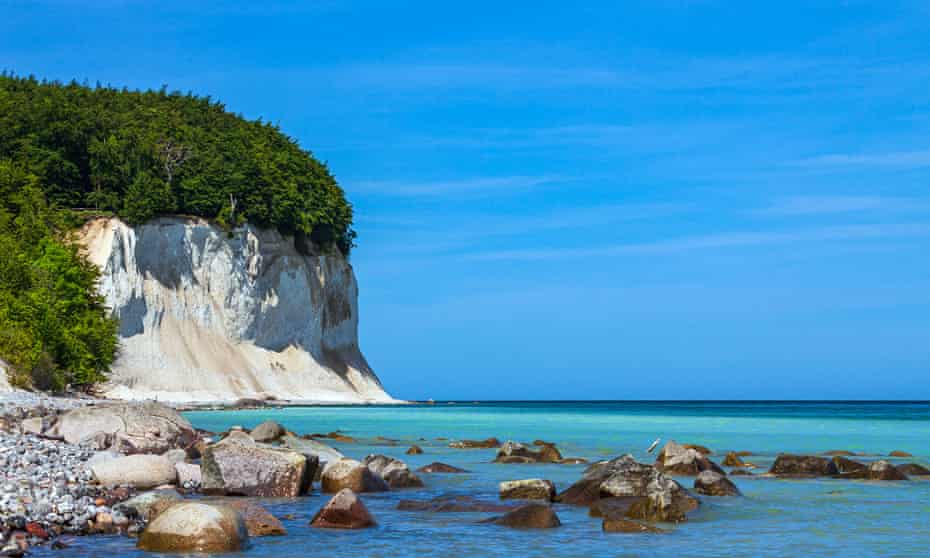
Although generally off the radar of non-German travellers, Mecklenburg-Vorpommern is well known to Germans as a summer hotspot. As well as some wonderful medieval towns – Schwerin, Wismar, Rostock, Stralsund – it offers a largely untouched landscape of forests, lakes and nature areas, including the Western Pomerania Lagoon national park (Vorpommersche Boddenlandschaft) in the north, and the Mecklenburg lake district (Mecklenburgische Seenplatte) and Müritz national park in the south. But it’s the coast of the Baltic (known to Germans as the Ostsee) that draws visitors in summer, with its historic ports, seaside spas and white sand beaches. Rügen is Germany’s largest island and its most diverse, with steep cliffs, sandy beaches and forest-covered hinterland. Parts of Rügen can get busy, but it’s large enough to escape the crowds; the northern and western sections tend to be a little quieter.
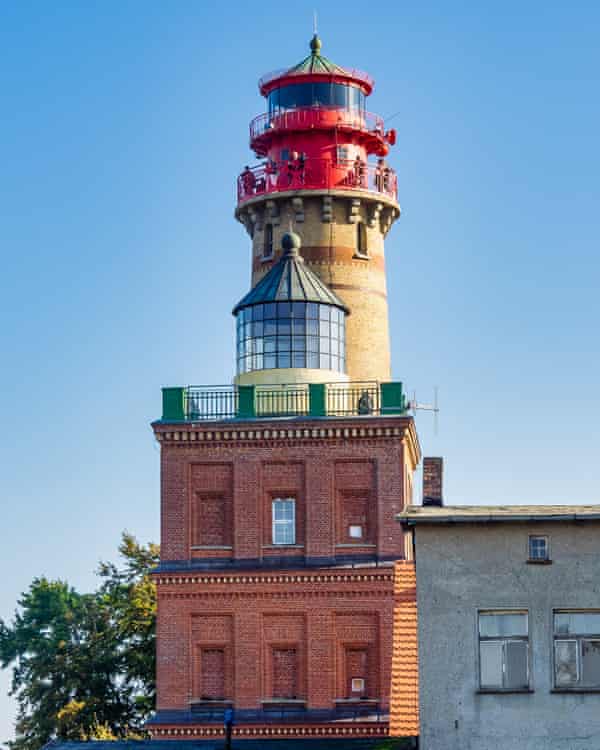
What to do
One of the biggest resorts on Rügen is Binz, on the eastern side, which has a beautiful white beach, some lovely villas, a history museum and a pier and promenade to stroll along; head for the hilltop Jagdschloss Granitz, a 19th-century hunting lodge, for superb vistas over to the white cliffs of the Jasmund national park and peninsula – depicted by Romantic painter Caspar David Friedrich. It’s a Unesco biosphere reserve and Germany’s smallest national park at just 31 sq km. It’s threaded with cycling and hiking trails, such as the scenic walk from the Königsstuhl (King’s Chair) plateau to Sassnitz.
North of the national park lie the soaring, rugged cliffs of Kap Arkona; one of its two lighthouses is now a museum and there are also military bunkers, a temple fortress and some restaurants. On the western islet of Ummanz, Waase has fishing village charm, options for pedal boating and some great seafood restaurants, with a lovely beach to the south. Across the island in the residential town of Putbus, the Rasender Roland (Rushing Roland), a narrow-gauge steam train, chugs through southeastern towns like Sellin and Göhren. A couple of hours’ drive to the south is the island of Usedom, part of which is in Poland: head to Ahlbeck, Heringsdorf and Bansin for more beaches, promenades and piers.
Where to stay
The Vju Hotel in Göhren is a classic resort hotel that includes a decent-sized pool and sauna area, as well as an appealing restaurant, where a double costs from €239. Aedenlife Hotel in Vaschvitz has comfortable rooms as well as apartments from €229 a night. Badehaus Goor in Lauterbach, close to Putbus, has smart rooms and a good restaurant; a double with balcony costs from €168.
Where to eat
In Ummanz you can grab a casual pizza and local fish dishes at the fun Ummaii Tiki Bar, which also runs surfing, windsurfing and kitesurfing courses. Weltenbummler in Binz has surf-and-turf plates and rice bowls, as well as a pleasant sea-facing terrace – or head to Fischräucherei Kuse, which has been running since 1900, for some of the best (and cheapest) fish sandwiches on the island. For a splurge, Freustil in Binz is one of the region’s top restaurants, with contemporary seasonal dishes served as multi-course menus.
Spreewald and the lakes, Brandenburg
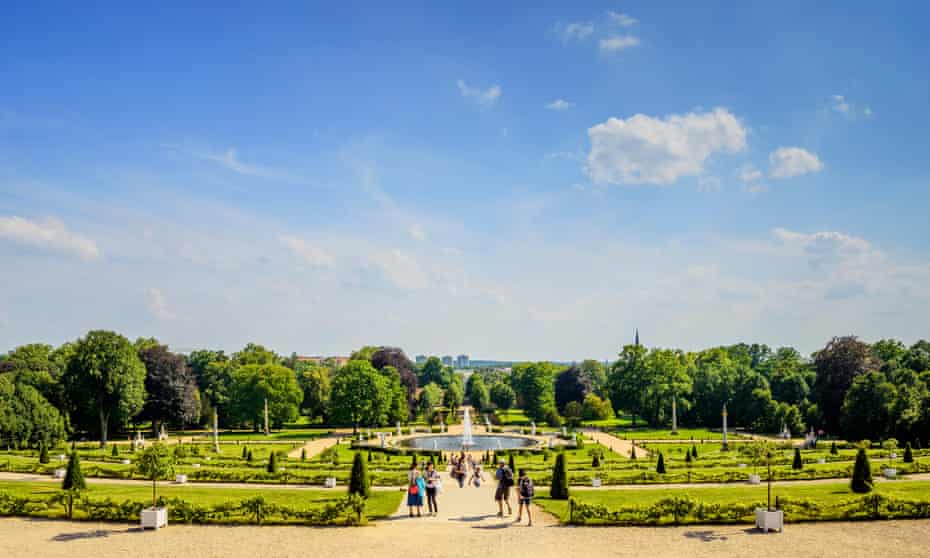
Brandenburg is often overshadowed by the city it surrounds, Berlin. But as residents of the capital know, the region offers plenty of respite when urban life gets exhausting. Most associate Brandenburg with its thousands of lakes, which make for superb day trips, but there’s plenty more, including 19,000 miles of rivers and waterways, 4,500 miles of cycle paths (many of them new or recently built) and 1,250 miles of signposted walking trails. Plus there’s the laid-back Spreewald region, state capital Potsdam with its Unesco-listed palaces and gardens, and the densely forested Schorfheide nature reserve (see below) plus many more castles, manor houses and parks.
What to do
Brandenburg is mostly flat and fairly forested, but its watery charms are its greatest strength, with many of the 3,000 or so lakes offering all kinds of water sports and leisure boat rentals. The Ruppiner Seenland in the north-west has charming towns like Rheinsberg, with its stately, art-filled palace on the banks of the Grienericksee; Kremmen, with its picturesque half-timbered houses; and Oranienburg, a former royal town on the banks of the Havel (and home to Brandenburg’s oldest baroque palace). To the north-east is the Schorfheide reserve, one of the largest closed forest areas in Germany, with plenty of hiking and cycling opportunities, the striking Chorin monastery and sparkling Werbellin lake. South of Berlin, the photogenic wetlands, forests and canals of the Spreewald are a paradise for canoe and kayak fans, who can explore from charming bases like Lübben and Lübbenau, and hiking and cycling routes such as the Pickles Trail (Gurkenradweg – the region is famous for its gherkins).
What to eat
There’s plenty of good food in Brandenburg, which is increasingly placing an emphasis on local products sourced from the region’s farms. Seehof Rheinsberg serves delicious, high-quality regional foods (baked goat’s cheese with honey and pumpkin seeds, fried catfish fillet with curry) while around the corner Ratskeller has local specialities like Old Brandenburg pot roast with ginger sauce and red cabbage in a classic setting. For a taste of Bavaria in Brandenburg, Freilich am See in Bad Saarow has white sausage and bread dumplings as well as wild boar and views over the lovely Scharmützelsee. Potsdam has the biggest variety, including Michelin-starred “new Prussian cuisine” at kochZIMMER – try to bag a seat in the gorgeous rear courtyard – and the cosy Landleben, overlooking Lake Sacrow.
Where to stay
Potsdam’s charming accommodation options include the stately Hotel Bayrisches Haus, in a country residence built in 1847 by King Frederic-William IV. It has a Michelin-starred restaurant, Kabinett FW, and a daytime spa, all set in a wildlife park (doubles from €145). In Lübbenau the four-star Hotel Ebusch has smart, comfortable rooms from €149, while up on the Ruppiner See, Theodors Boutique Hotel is a Mediterranean-style villa with lakeview rooms from €109.
Harz mountains
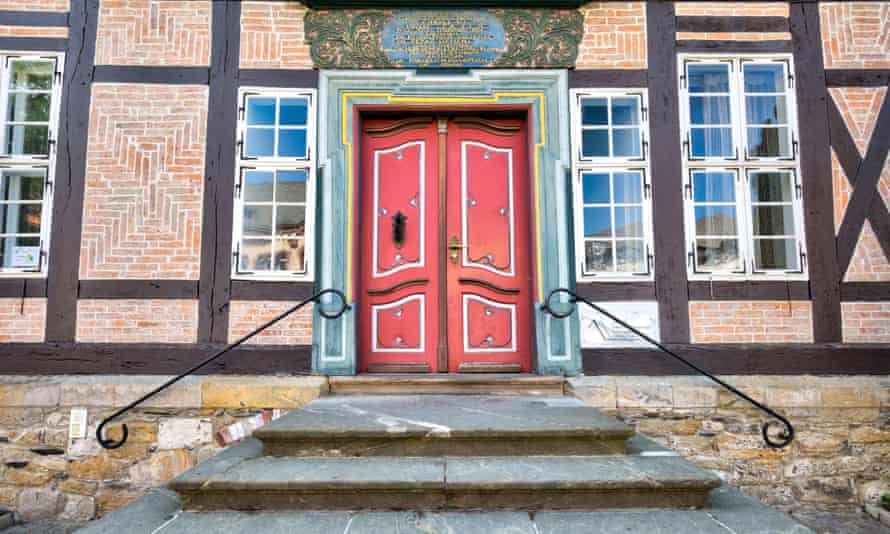
The Harz mountains straddle three regions – Saxony-Anhalt, Thuringia and Lower Saxony – and in the middle lies the Harz national park, 250 sq km of mostly spruce and beech forest. Historically connected with poets Heinrich Heine and Johann Wolfgang von Goethe, who both hiked here (the latter also drew on the region’s occult mythology for his Faust tragedy), it’s a peaceful area with rolling hills, lush meadows and valleys, and attractive towns in the foothills such as Quedlinburg, Goslar and the ski resort of Braunlage. It’s home to peregrine falcons, deer, wild boar and even lynx, although they’re hard to spot; the visitor centre can arrange tours with the park rangers.
What to do
Bring your own car if you can because public transport can be patchy, though it’s not impossible to explore via bus and train. The area’s main destination is the Brocken, the Harz’s highest peak, which is covered in mist for most of the year. Many trails, such as the Harzer-Hexen-Stieg, a 58-mile trail from Osterode to Thale, and the Teufelsstieg (Devil’s Path) from Bad Harzburg to Elend, go via the Brocken.
Mountain bike fans have more than 1,370 miles of trails, forest tracks and rocky passages to explore, as well as five bike parks, and there’s the MegaZipline – which reaches speeds of 55mph over the Rappbode Dam – for additional thrills. If you’re not a hiker or biker, a train circles the mountain regularly, and there are mellower activities: an open-air museum dedicated to the years Germany spent divided in the former border village of Sorge, Halberstadt cathedral, monasteries at Drubeck and Walkenried, and the Rammelsberg Mine, Germany’s first Unesco technology centre. In winter, the region offers dog sled tours, snowboarding, cross-country skiing and skating.
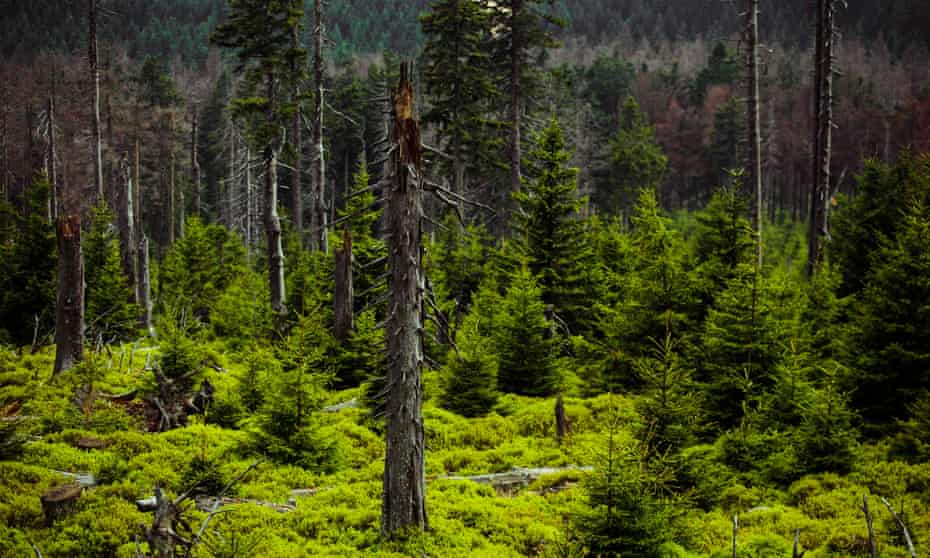
Where to stay
The Liono boutique hotel, on Steinberg hill in Goslar, has views of the mountains and is close to the main sights in town (doubles from €114). In Quedlinburg, Hotel Garni Tilia is a convenient base and also has comfortable doubles for €114. In Braunlage, try the stylish Designhotel Viktoria, a 10-minute walk from the ski slopes, with doubles from €129.
Where to eat
The four-star Weisser Hirsch (White Stag) hotel in Wernigerode has a traditional restaurant with dishes like wild hare on the menu as well as multi-course menus (reservations advised). Braunschweiger Hof in Bad Harzburg does a mix of German and other European cuisine, while the Brauhaus Lüdde in Quedlinburg offers decent pub food and a good selection of beers.





